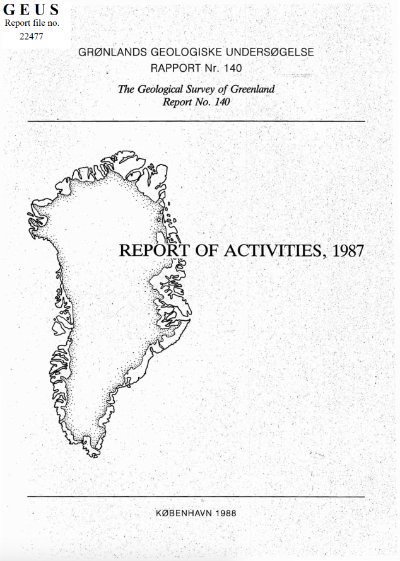Studies of the onshore hydrocarbon potential in East Greenland 1986-87: field work from 73° to 76°N
DOI:
https://doi.org/10.34194/rapggu.v140.8044Abstract
The study of the Devonian to Cretaceous sequence in central and northem East Greenland was continued in 1987. Field work was carried out from early July to mid August covering the region between Ymer Ø and Hochstetter Forland (fig. 1). This was the second year of a two-year field work programme (Marcussen et al., 1987) which forms part of a regional programme comprising sedimentological, stratigraphic, structural, and petroleum geological studies of the sedimentary basin in central East Greenland (e.g. Surlyk, 1983; Surlyk et al., 1984, 1986a,b). Stordal in Hudson Land, which offers a naturaIlanding strip for STOL aircraft, was used as base camp for the 1987 expedition. The expedition group of 15 included four to five geological field parties and five supporting personnel, including a helicopter pilot and mechanie. In addition a five-man British-Danish East Greenland 'vertebrate-paleontological' expedition (Bendix-Almgreen, 1988) and a group from GGU planning the 1988 expedition to North-East Greenland were present. Two teams (led by P.-H.. Larsen and H. Olsen) studied the tectonics and sedimentology of the Devonian succession. Two teams (led by L. Stemmerik and S. Piasecki) investigated the Carboniferous, Permian and Triassic sedimentology of the region. The Jurassic and Cretaceous sequences were studied by two teams (led by S. Piasecki and in the late half of the season by H. Nøhr-Hansen). All the teams collected material for source rock analyses and a large number of samples were also collected for determining reservoir rock properties.
Downloads
Published
Issue
Section
License
This article is distributed under a CC-BY 4.0 licence, permitting free redistribution and reproduction for any purpose, even commercial, provided proper citation of the original work. Author(s) retain copyright over the article contents.


